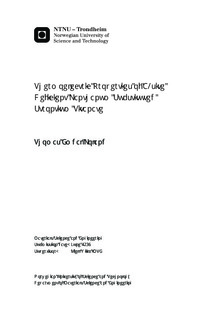Thermoelectric Properties of A-site Deficient Lanthanum Substituted Strontium Titanate
Master thesis
Permanent lenke
http://hdl.handle.net/11250/249633Utgivelsesdato
2014Metadata
Vis full innførselSamlinger
Sammendrag
The n-type thermoelectric material (La0.12Sr0.88)0.95TiO3-delta was sintered with the spark plasma sintering method at different temperatures and pressures. This was done to reduce the thermal conductivity of the material and increase its thermoelectric figure of merit. The samples sintered at the lowest temperatures had less grain growth, and hence a lower thermal conductivity. The thermal conductivity of these samples were significantly lower than measurements reported by Sele on the same stoichiometry. The thermal conductivity reduction in the samples are mostly attributed to small grain size reducing the phonon mean free path, and hence lattice conduction in the samples. Some phase segregation was observed in the samples sintered at highest temperature. The secondary phase did not display any significant impact on the thermal conductivity of the samples. The thermal transport by electrons is close to zero in most of the samples because of a low charge carrier concentration. Since the carrier concentration inflict all the important parameters of a thermoelectric material, an optimum concentration exist. This concentration is well above what was observed in this work. The electrical conductivity and the Seebeck coefficient are both heavily reliant on the charge carrier concentration in the material. For this reason, some strategies for increasing the amount of charge carriers in future experiments have been presented. The presented work has further advanced the understanding of the investigated material. This is an important step toward being able to manufacture a n-type thermoelectric material, that is oxide-based and market viable.
